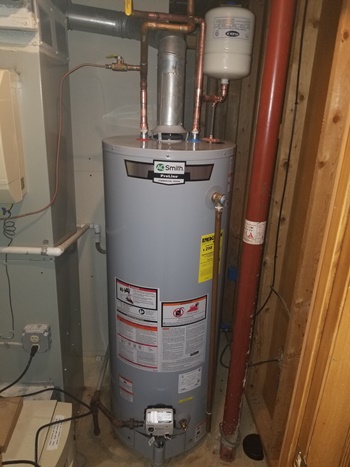Specialist Guidance for Maintaining Your Home's Hot Water System
Specialist Guidance for Maintaining Your Home's Hot Water System
Blog Article
The content further down involving How to Maintain Your Water Heater & Prolong its Life is immensely motivating. Don't miss out on it.

Hot water is crucial for everyday comfort, whether it's for a revitalizing shower or cleaning meals. To guarantee your warm water system runs efficiently and lasts much longer, routine upkeep is crucial. This write-up supplies practical ideas and understandings on exactly how to maintain your home's warm water system to avoid disturbances and costly fixings.
Introduction
Maintaining your home's warm water system might appear challenging, however with a few basic actions, you can ensure it runs smoothly for several years to find. This overview covers whatever from recognizing your hot water system to do it yourself maintenance pointers and knowing when to employ professional assistance.
Importance of Maintaining Your Warm Water System
Regular upkeep not just prolongs the life-span of your hot water system yet also ensures it runs efficiently. Disregarding maintenance can cause lowered efficiency, higher power bills, and even early failure of the system.
Indications Your Hot Water System Requirements Upkeep
Understanding when your warm water system requires interest can stop significant problems. Look out for signs such as irregular water temperature, unusual sounds from the heater, or corroded water.
Understanding Your Hot Water System
Before diving right into upkeep jobs, it's helpful to understand the fundamental elements of your hot water system. Usually, this consists of the hot water heater itself, pipelines, anode rods, and temperature level controls.
Regular Monthly Upkeep Tasks
Normal month-to-month checks can help catch minor concerns prior to they intensify.
Purging the Hot Water Heater
Purging your water heater eliminates sediment buildup, enhancing performance and extending its life.
Monitoring and Changing Anode Rods
Anode rods protect against corrosion inside the storage tank. Evaluating and replacing them when worn out is essential.
Examining and Readjusting Temperature Setups
Changing the temperature level settings makes sure optimum performance and security.
DIY Tips for Maintenance
You can execute a number of upkeep tasks yourself to maintain your warm water system in top condition.
Checking for Leakages
Regularly examine pipes and links for leakages, as these can bring about water damages and greater costs.
Checking Pressure Relief Valves
Evaluating the stress relief valve guarantees it operates correctly and avoids extreme stress accumulation.
Protecting Pipelines
Shielding warm water pipelines minimizes warm loss and can save power.
When to Call a Specialist
While do it yourself maintenance is useful, some issues require expert know-how.
Complex Concerns Calling For Professional Help
Instances include major leaks, electric troubles, or if your water heater is constantly underperforming.
Regular Specialist Maintenance Advantages
Expert maintenance can include complete assessments, tune-ups, and guaranteeing compliance with security requirements.
Final thought
Routine maintenance of your home's hot water system is vital for effectiveness, durability, and expense savings. By following these tips and recognizing when to look for specialist aid, you can make sure a trusted supply of warm water without unanticipated interruptions.
How to Maintain an Instant Hot Water Heater
Before tinkering with your hot water heater, make sure that it’s not powered on. You also have to turn off the main circuit breaker and shut off the main gas line to prevent accidents. Also turn off the water valves connected to your unit to prevent water from flowing into and out of the appliance. 2. When you’re done, you have to detach the purge valves’ caps. These look like the letter “T†and are situated on either side of the water valves. Doing so will release any pressure that has accumulated inside the valves while at the same time avoid hot water from shooting out and burning your skin. 3. When the purge valves’ caps are removed, you have to connect your hosing lines to the valves. Your unit should have come with three hoses but if it didn’t, you can purchase these things from any hardware or home repair shops. You can also get them from retail stores that sell water heating systems. Read the user’s manual and follow it to complete this task properly. When the hosing lines are connected, open the purge port’s valves. 4. You should never use harsh chemical cleaners or solutions when cleaning your unit. Make use of white vinegar instead. It should be undiluted and you’ll probably use about 2 gallons. 5. Now flush your water heater. This task should probably take about 40 minutes. We can’t give you specific directions for this because the procedure is carried out depending on the type, model and brand of your heater. With that being said, refer to the user’s manual. 6. When you’re done draining the unit, you have to turn off the purge port valves again. Remove the hosing lines that you earlier installed on each of the water valves. Put the valve caps (purge port) back in their respective places and be very careful so as not to damage the rubber discs that are found inside these caps. 7. Now that everything’s back in place, check your user’s manual again to find out how to reactivate your water heating system. 8. Once it is working, turn one of your hot water faucets on just to let air pass through the heater’s water supply pipes. Leave the tap on until water flows smoothly out of it. https://www.orrplumbing.com/blog/2014/september/how-to-maintain-an-instant-hot-water-heater/

As a serious reader about Tips on Maintaining a Water Heater, I imagined sharing that portion was mandatory. So long as you enjoyed reading our post please remember to share it. I love reading our article about Tips For Maintaining Your Hot Water Heater.
Here Report this page